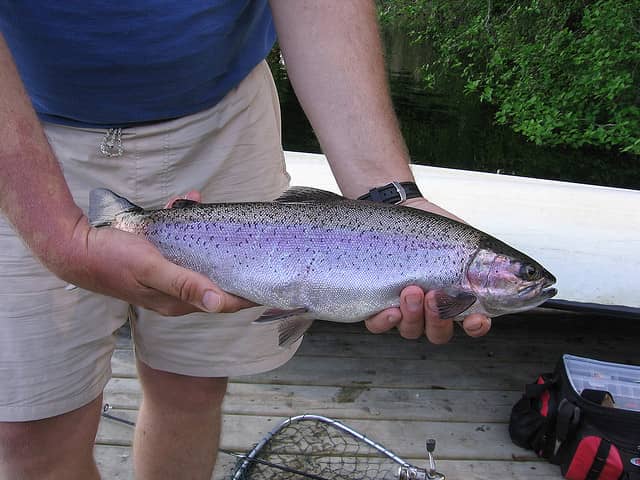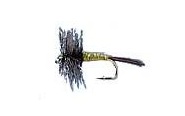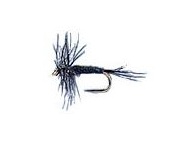Winter Trout Fishing Techniques
Cabela's 12.02.11

Outside it’s cold, in fact very cold for the end of October, but I’m still thinking about fishing because I know that there will be warm days ahead. There will be a number of days this winter when you walk outside and realize the temp is up 10 degrees above normal.
I’ve never been fly-fishing in the middle of winter, and that alone seems to me to be enough of a reason to go. More importantly, I know guys who go throughout the winter and come back with pictures of really big fish so that cinched the deal for me. I’m going! All I need to know is the how and where. I’ve got the when figured out.
Planning is the key to success, no matter what you’re doing, so I wandered down to the office of another fishing nut that is recognized as THE expert in fly-fishing at Cabela’s. Monte Malzahn has laid his line out all over the world and fortunately for my purpose, he’s dedicated (crazy) enough about fishing to go in the winter.

“Monte,” I began, “I’m thinking about going trout fishing this winter.” He smiled briefly, then his expression changed to one of total acceptance, as if I would be crazy not to. He started reeling off information acquired through many years of devotion to delicate presentations. Just looking at Monte’s boyish face, it’s hard to consider that he’s done anything for any length of time, but he’s one of those guys that have been blessed with a deceptively youthful appearance. Actually, he’s got a son who’s almost as old as he looks. That issue aside, Monte knows his stuff, so I started taking notes and probing for more detail.
Most people who haven’t been fly-fishing in the winter aren’t aware that spring isn’t the only time that life emerges. According to Monte, all it takes is a rise in temperature and an overcast day to produce abundant hatches, but the key is timing. “We’re talking about a matter of hours, not an all day thing. If you can stay on the water long enough, during the warmer days, you will experience a hatch and the bite will be very active until it’s over. Like most things in life, timing is everything.
“First of all, there are two different phases when dry flies are fairly good. The midge hatch and blue winged olives, or baetis are the most prevalent cycles during winter. Blue-winged olives and baetis are one in the same, but people call them by different names. When you get a warm period and temperatures rise a little, on an overcast day, you’ll get a good hatch. Typically, in the early months of winter you’ll have blue winged olives (commonly called BWO’s) emerging. You’ll need small flies, in the 22, 24 and 26 sizes. They’ve got to be small and they’ve got to be close in size to what the fish are feeding on. During the winter size is very important,” he cautioned.

“The midge hatches come during the warm days in mid to late winter. All in all, you’ll find that 90% of your success will come on nymphs.”

“Look for winter holding pools. You won’t find fish in the fast water where they have to expend a lot of energy. During the winter, fish will lay behind a rock, in an eddy, where they can wait for something to come by close enough that they can eat it without moving too much. Target pocket waters, out of the major flow and work every area over inch by inch. This is not a time to make a few casts and move on. You need to dissect an area methodically, and cover every possible place where trout might be waiting. Work an area systematically from all the different zones because they’re not going to move. You’ve got to put it right in front of them or they simply won’t take it. No fish is going to spend much energy chasing down a bug the size of a grass seed.”
Matching the hatch isn’t just a timeworn cliché.
“To be honest, I don’t think color is that important during the winter. Grays, reds and blacks seem to work best, but I’ve caught good fish on other colors. If you keep your patterns identical to the hatch you can’t go wrong.”

“Winter fishing is a perfect time for a midge larva pattern under an indicator. I prefer to use a yarn indicator. The bite is very delicate, and you’re not going to get a bite and an immediate, hard run. It’s more like a nibble and sit situation. The other important thing to remember is deep. Select a pattern such as the Copper John or a midge pupa pattern with a bead head. You want patterns that don’t use a lot of material, that sink fast and get down to where the fish are holding,” he said.
“Tailwater fishing is probably the most consistent during the winter. The water is coming out of the dam from a constant depth and the flow doesn’t vary much throughout the entire winter, so fish seek those areas where warmer water carries a food supply right past their hiding places. The San Juan, Green River and the Big Horn are pretty consistent in winter months, but the one thing you’ve got to keep in mind is ice flows.
“Water freezes along the banks but the main channel is relatively constant in temperature. When the weather warms up, you can have large chunks of ice break loose. There has been more than one angler that has drowned because he wasn’t watching what was going on in the river upstream. The ice comes downriver at a good clip and can be on you before you have time to get out of the way if you’re not paying attention. Keep one eye on the area you’re targeting and the other on the water upstream if the temperatures are rising dramatically, especially during the late winter months,” he cautioned.
Gear
“Using a light fluorocarbon leader will help you get your fly down quickly. It’s also a good idea to take along some Stanley Ice Off. It’s like anti-freeze for your guides, made by Loon Outdoors. It’s great, and will keep your line from freezing to the eyes while you’re stripping line. Rod weight will depend on where you’re fishing. In the Sandhills, below the Snake, you could fish all day with a 4-wt. and not worry, but I wouldn’t take a 4-wt to the Big Horn. Take along a pair of neoprene gloves. Some guys like to use the fingerless gloves, so they can maintain the feel of their rod and line. Gloves are a matter of personal preference, and we’ve got a number of good ones to choose from. You’re basically at the mercy of the weather, so being prepared and dressing in layers is the only way to go. Just remember that the important thing is you’ll be fishing and there won’t be a lot of competition for the best spots. February can be fabulous,” he added, reaching for his calendar.
Try out your fishing technique with Cabela’s fishing gear.
About the author
Frank Ross grew up on a lake in Florida, where fishing and hunting were second nature. He has pursued his passion from the jungles of South America to the northern reaches of the Arctic Circle and most points in between. With a background in newspapers, the wire services and magazines that began in 1970, Frank brings a unique perspective to his work with Cabela’s. He is an award-winning photographer with a flair for getting to the bottom line of every story.

